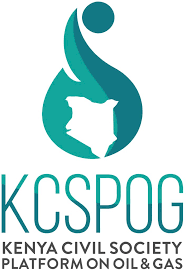Tullow and its Joint Venture Partners Will Not be Flaring Associated Gas
by Emmaqulate Kemunto
During a project disclosure workshop held by Tullow and its joint venture partners early this month, the
international oil companies revealed that they will not be flaring the gas associated to the Turkana oil
during the production phase. This is in effort to reduce the project’s carbon footprint, given the pressure
fossil fuels have on the environment, and the global crisis of climate change that is upon us.
Hydrocarbon resources such as coal, and crude oil have been established as a significant contributor to
environmental pollution and climate change, because they are very carbon intensive. During the
production phase where oil is extracted from the wells on a large-scale basis, the extracted oil is
associated with two other components: produced water and associated natural gas. This is then taken
through the separation facility, where the oil, water and gas are separated.
Since the 1800s, the associated gas, mainly composed of the environmentally harmful methane, would
be released, and burnt in an open flame (which is called gas flaring), with carbon dioxide as one of the
main byproducts. The flaring is supposed to reduce the volume of methane – a highly flammable and
prominent greenhouse gas known to cause global warming – released into the atmosphere. Flaring has
for a long time been criticized as a flawed solution because even in cases where there is combustion
efficiency, only about 98% of the gas would be burnt, meaning that some volumes of methane would
still escape into the atmosphere. In most countries where flaring is done, such as Nigeria, there are
regulations to regulate the mechanical and technical aspects of flaring to promote combustion
efficiency.
Apart from the significant climate and environmental impacts, gas flaring is a regrettable waste of non-
renewable resources, rendering seeking alternatives the only wise and viable mission for oil producing
countries. Countries like Norway have banned flaring altogether, save for necessity flaring in emergency
situations. These alternatives include flare gas recovery and capture technologies, reinjecting the excess
gas back into the wells to maintain well pressure and using the excess gas to generate electricity for use
by the project. Some companies, with the aid of national governments, and depending on the volumes,
inject the captured excess gas into pipelines for sale as Liquified Natural Gas (LNG.) However, this will
also depend on the availability of a ready downstream market and relevant infrastructure such as gas
pipelines.
This being Kenya’s maiden oil and gas project expected to proceed to the production phase, the country
is yet to formulate technical regulations on gas flaring, besides the current Air Quality Regulations of 2014.
However, as per Kenya’s Petroleum Act, the oil company is not allowed to flare gas unless they get
authorization from the Energy and Petroleum Regulatory Authority (EPRA), which should, obviously be
in accordance with the Environmental Impact Assessment (EIA) licence conditions.
According to the international oil companies in Turkana, they will reinject the associated gas back into
the wells to maintain well pressure and enhance oil recovery, consequently returning the methane in
the associated gas into the ground. This is meant to reduce the volume of methane and carbon dioxide
which would have been released into the atmosphere had the associated gas been flared instead. They
will then use the remainder gas to generate electricity, which they will use to run the project,
eliminating the need to rely on electricity from the national grid.
It is important to understand that this certainly is an expensive undertaking, which will further increase
the cost of the project. However, in the interest of environmental conservation and Kenya’s climate
change obligations and goals towards low carbon and climate resilient development, making oil and gas
projects less carbon intensive is a necessity.
Endeavoring to make a crude oil project green is quite the positive paradox. Whether this undertaking
stands the test of time remains to be seen.
With the global pressure to transition from fossil fuels energy, countries that still rely on this resource to
boost their economies are faced with a harsh dilemma. The same dilemma is faced by oil and gas
companies, and how they project themselves in the energy transition and climate change conversations.
Perhaps to them, making oil and gas projects “greener” and reducing their carbon footprint is an
attractive alternative to embrace, albeit short-term.
The author is a Campaigner at the Kenya Civil Society Platform on Oil and Gas.
